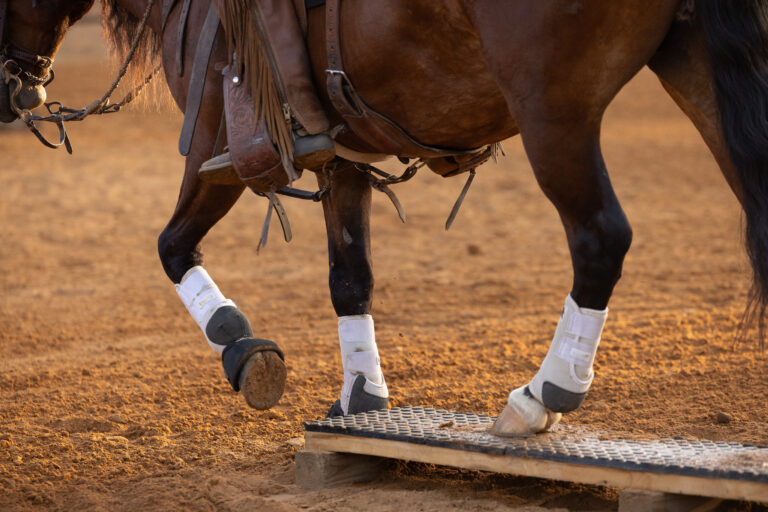Evaluate and place these performance geldings. Then see how your choices compare to our expert judge’s.
[LEARN: How to Take a Good Conformation Photo]
From the Judge
This is a nice class of performance geldings. Whether the class is halter or performance halter, the first things I look for are overall balance and correctness. I’ll be judging these geldings on the four categories of balance, structural correctness, breed and sex characteristics, and muscling, and assess each horse’s pluses and minuses within those categories.
Overall balance and correct structure can benefit athleticism and help a horse stay sound. General attractiveness helps, too, as some horses have a natural presence that stands out. I like to see good-bodied horses with enough substance and bone to hold up to athletic work. I also like to see soft eyes and well-set ears, even in geldings, as their heads are an indication of their overall quality and trainability.



Put Your Conformation Knowledge to the Test!
Check your answers, below!

Gelding C
This athletic-looking gelding is the most balanced and structurally correct in this class, with seamless flow from front to hind end. Though his back is possibly a touch long, his topline is very strong with prominent withers that extend nicely into his back, strength across the loin, and a nice slope to his croup.
His appealing head has a soft eye and small, well-set ears. Though it could be a touch longer, his well-shaped neck features a clean throatlatch and ties in nicely to his chest. He has a lovely shoulder angle that matches his hip angle for ideal symmetry and athleticism. His depth of heartgirth is excellent and his well-defined muscling is evenly distributed from front to back.
His legs are notable for their ample bone, clean appearance, and short cannon bones. His front legs form a good straight column to the fetlock, and his pasterns show good length and angle. His hocks have a very good angle with his hind cannon bones, forming a plumb line to the ground. This gelding should make a very good performance horse.
Gelding B
This gelding is attractive, but places second with a few shortcomings. Compared to Gelding C, his topline drops off behind the withers, his back is a touch long, and he lacks the strength across the loin. The turn over his croup is a bit peaked, but his croup shows acceptable slope, length, and a
nice tailset.
His turned head shows great expression, and he appears clean in his throatlatch. His neck is of good length, but ties in a touch low to his chest. His shoulder is steeper than ideal and doesn’t match his good hip angle, a key reason he places behind Gelding C. He’s a bit shallow in his depth of body, which lends to his long-bodied look. His muscling is adequate, but lighter than the first-place gelding’s.
His legs show adequate bone, and up front, a straight column through the knees with acceptable pastern length and slope. However, he’s standing out over his front legs, which is common with steeper shoulders. His hocks show a good angle and should allow him to drive off his hind end well.
Gelding A
This gelding has more minuses than the others in terms of conformation, including structural correctness issues that could hinder performance. His topline is weak, lacking prominent withers and dropping off for a sunken appearance over his back and loin, though his croup is of adequate length and slope with a good tailset.
His head is average but connects cleanly to a trim throatlatch. His neck, adequately long for his proportions and tidily tying into his chest, is his best feature. Like Gelding B, his shoulder is steep and doesn’t match the better angle of his hip. He’s lightly muscled and quite shallow bodied, making his midsection appear longer than it is. Ideally, the distances from topline to underline and underline to ground would be equal, but this gelding has more leg than depth of body.
He’s light boned in the legs, tying in abruptly behind the knees. He also appears a bit calf kneed, though his pastern and hoof angle are acceptable. His overly angled hocks, with hind cannon bones jutting significantly forward of the plumb line, will limit his ability to drive from his hind end.






